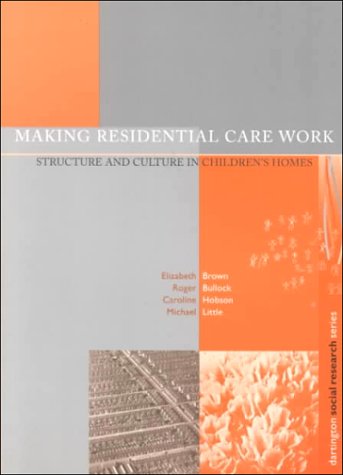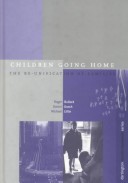Dartington Social Research
4 total works
Making Residential Care Work
by Elizabeth Brown, Roger Bullock, Caroline Hobson, and Michael Little
Published 25 June 1998
Over 6,000 children live in residential homes in England and Wales, but it is proving increasingly difficult to provide them with satisfactory care. The fact that some children's homes are better than others is well established, but why should this be so? Past answers have tended to be tautologous - rather on the lines of "a good home is one where children do well; children do well because they are in a good home". This Dartington study examines various aspects of children's homes and explores the connections between them in an attempt to break down the old circular argument. Structures are discernible in the relationship between different types of goals - societal, formal and belief; the variable balance between these goals determines staff cultures, which, in turn, shape the child cultures that develop. Such relationships are important because of their close association with outcomes - whether the children do well, whether the homes prosper. The model described in the book provides a conceptual framework and a set of causal relationships that should help professionals to plan and manage residential care better and so meet the needs of vulnerable children more effectively.
This work explores the care careers of adolescents in long-stay treatment units with emotional and conduct disorders. But this is only one part of the equation for treatment eligibility - the other being the professional, administrative and legal framework in which the problems are addressed.
In this text, the issue of children returning to their home after a long period of separation is discussed. It aims to clarify the concept of the return through an exploration of childcare law and relevant literature, and scrutinizes the return process and charts the processes and return avenues experienced by all looked after children. The book also presents data from which researchers can identify groups of children particularly vulnerable to return difficulties and highlights factors significantly associated with the likelihood of return and its success. As it is intended that the study should assist social work practice, an additional aim is to inform social workers about the most effective ways of preparing and managing children's returns.
Secure Treatment Centres
by Roger Bullock, etc., Michael Little, and Spencer Millham
Published 25 June 1998
This work explores the care careers of adolescents in long-stay treatment units with emotional and conduct disorders. But this is only one part of the equation for treatment eligibility - the other being the professional, administrative and legal framework in which the problems are addressed.



